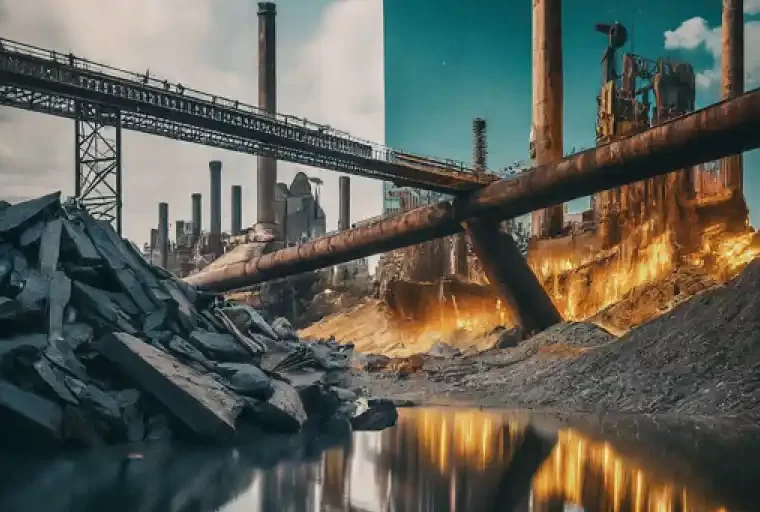Steel industry 2024
The global steel industry has experienced significant volatility in recent years. The COVID-19 pandemic, the war in Ukraine, and supply chain disruptions have all contributed to market uncertainty. However, there are signs that the industry is starting to stabilize. This article provides an overview of the key factors that are likely to affect the global steel industry in the second half of 2024. It also discusses the challenges and opportunities that lie ahead for the industry.
Key factors affecting the global steel industry in 2024
- The war in Ukraine: The war in Ukraine has had a significant impact on the global steel industry. The war has led to sanctions on Russia, a major steel producer. These sanctions have disrupted supply chains and increased the cost of steel.
- Global economic growth: The global economy is expected to grow at a slower pace in 2024 than in 2023. This could dampen demand for steel.
- Inflation: Inflation is on the rise in many countries. This could lead to higher costs for steel producers.
- Sustainability: The steel industry is facing pressure to reduce its environmental impact. This could lead to higher costs for steel producers.
Storm for Steel: Uncertainty, Reduced Demand & Rising Costs
The global steel industry is facing a confluence of challenges in the latter half of 2024. The ongoing war in Ukraine continues to disrupt supply chains, with the potential for further sanctions on Russia, a major steel producer, further exacerbating the situation. This uncertainty creates a volatile market environment for both steel consumers and producers, with potentially limited supply options.
Adding to the woes is the specter of a sluggish global economy. If economic growth slows down, demand for steel used in construction, manufacturing, and infrastructure projects is likely to decline.
This could drive down steel prices, squeezing profit margins that are already under pressure from rising costs for raw materials and energy. Second, with lower demand, steel mills may be forced to reduce production or even shut down furnaces. This could lead to job losses and a potential oversupply of steel in the future, further depressing prices and creating a challenging environment for the entire industry.
Beyond these immediate concerns, the steel industry faces a long-term challenge: sustainability. There is increasing pressure on steel producers to reduce their environmental impact. This will likely translate to significant investments in new technologies and processes aimed at minimizing carbon emissions and waste generation.
While these efforts are crucial for the long-term health of the industry, they come at a cost. Implementing cleaner technologies, adopting greener raw materials, and complying with stricter environmental regulations could all significantly impact steel producers’ bottom lines. The challenge lies in finding a balance between environmental responsibility and economic viability.
Steel producers will need to innovate and explore cost-effective solutions to achieve sustainability goals without sacrificing affordability for their customers. This could involve exploring partnerships with renewable energy providers, utilizing recycled materials, or optimizing production processes to minimize waste. Striking this balance will be critical for the industry’s long-term success in a world increasingly focused on environmental responsibility.
This combined effect of geopolitical uncertainty, a potential economic slowdown, rising costs, and the green imperative creates a perfect storm for the steel industry. Navigating these challenges successfully will require a strategic and innovative approach from steel producers in the second half of 2024 and beyond.

Understanding China’s Iron Ore Imports: Insights from MaQin Investment Group
Opportunities for the global steel industry in 2024
Expanding Automotive Sector: The automotive industry is poised for significant growth in 2024, driven by various factors such as increasing consumer demand, technological advancements, and shifts towards electric vehicles. As the automotive sector expands, it is expected to rely heavily on steel for various applications, including vehicle frames, chassis, and body panels. This increased demand for steel from the automotive industry presents a promising opportunity for steel manufacturers to ramp up production and capitalize on the growing market.
Booming Construction Sector: The construction industry is set to experience robust growth in 2024, fueled by infrastructure projects, urbanization trends, and investments in residential and commercial developments. As construction activities pick up pace worldwide, the demand for steel is expected to soar, given its indispensable role in structural frameworks, reinforcement, and building materials. Steel remains a preferred choice for construction due to its strength, durability, and versatility, making it essential for meeting the evolving needs of modern construction projects.
Emerging Technological Advancements: The emergence of new technologies, such as 3D printing, is reshaping the landscape of manufacturing and production processes. In particular, 3D printing holds immense potential for the steel industry, offering innovative solutions for complex designs, rapid prototyping, and customized manufacturing. As 3D printing technology matures and becomes more accessible, it is likely to open up new opportunities for steel manufacturers to explore novel applications, streamline production workflows, and enhance overall efficiency. Embracing these technological advancements can position steel companies at the forefront of innovation, driving growth and competitiveness in the global market.
Conclusion
The global steel industry is facing a number of challenges in 2024. However, there are also a number of opportunities for the industry. The war in Ukraine, the slower pace of global economic growth, inflation, and sustainability are all challenges that the industry will need to address in 2024. However, the growth of the automotive and construction industries and the development of new technologies could create new opportunities for the industry.
This article is just a brief overview of the key factors that are likely to affect the global steel industry in 2024. For a more detailed analysis, please refer to the following sources
- World Steel Association: https://www.worldsteel.org/
- International Monetary Fund: https://www.imf.org/
- The World Bank: https://www.worldbank.org/
The global steel industry is a complex and dynamic industry. The factors listed above are just some of the many factors that are likely to affect the industry in 2024. It is important to stay up-to-date on the latest developments in the industry in order to make informed decisions about the future.



Your perspective on [topic] is unique. I really enjoyed reading it.
it’s my pleasure Zain.